In a recent blog, I explained why slowing down the pace of your walk on your local patch can help you spot opportunities for photographing springtime wildlife. Not only does a slower stroll keep you cool as the weather warms up, but it also gives you the time to notice the wildlife springing into life around you.
But what about when we aren’t in a local spot we know well? How can we make the most of a couple of hours of wandering in a new location? With spring rapidly turning into summer and holidays and days out rightly taking priority, it can be tricky to capture wildlife images when you’re taking short trips to new locations. In these situations, I have found the best plan is to let the wildlife be your guide.
Listening out for nests – part 1
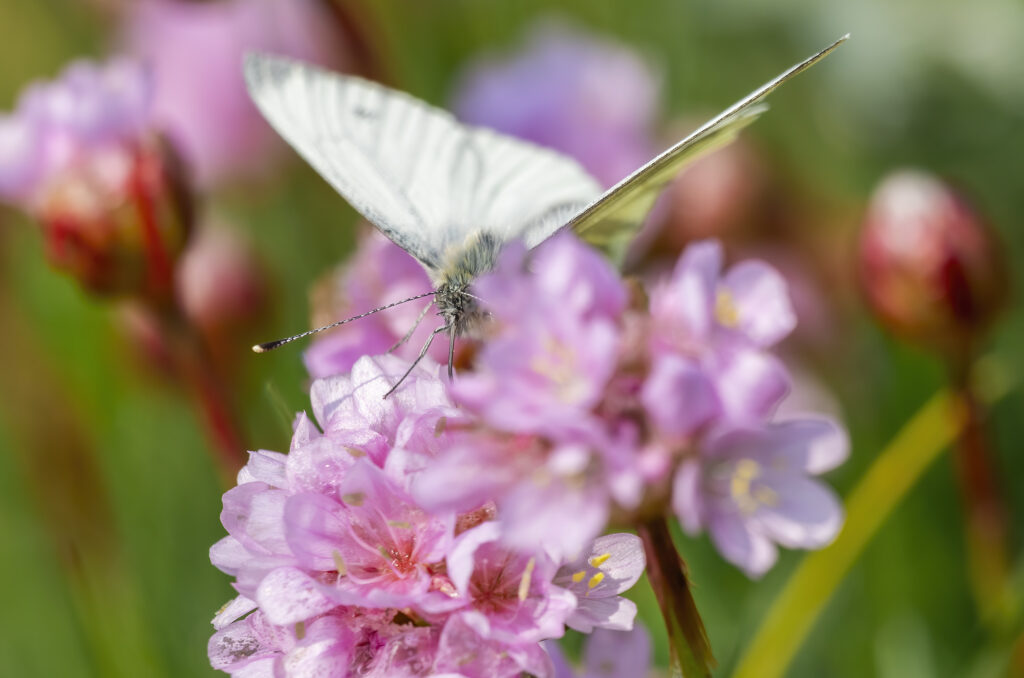
I was on the beach on the trail of a green-veined white butterfly, dropping down on one knee when I thought I was in the best position. It was flitting above a carpet of sea pink, aka sea thrift, searching for the perfect spot to settle and drink.
We often see sea pink on our coastal walks, but you can also spot it away from the seaside in parks and gardens. It is an adaptable and tough little flower that can grow on cliff tops (providing a perfect background for puffin images!), salt marshes, and by rivers. The green-veined white also prefers moist places with lush vegetation. I was in luck, as the sea pinks and the butterflies were thriving.
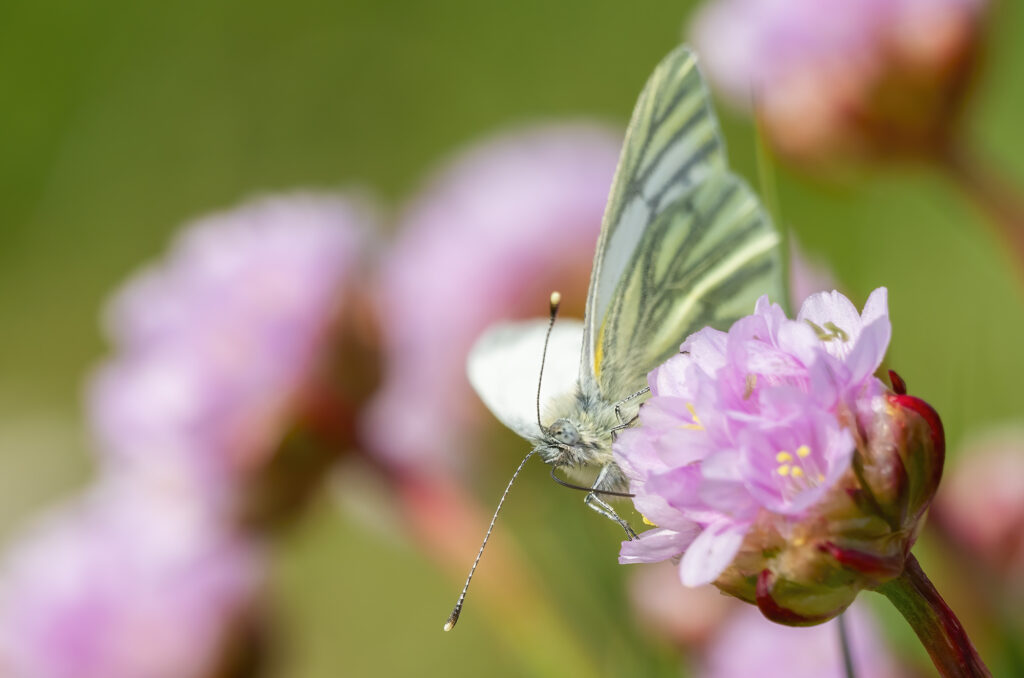
The loud ‘tchack’ noises moved from the back of my mind to the front as they succeeded in breaking my concentration. The green-veined white fluttered away on a breeze as I stood and turned towards the woodland beyond the coastal path. There was a commotion in the trees. Ten or so jackdaws were bouncing about in the branches. Cue much flapping before most of the flock disappeared, leaving just two, agitatedly chattering with each other. My instincts told me that there was a nest nearby to cause that much kerfuffle in the middle of a sunny day. So, I abandoned my butterfly hunt and pointed my lens at the tree next to where the jackdaw pair were perched. Sure enough, there was a large hole in the tree trunk, and moments later one of the pair went inside while the other flew off. I captured the image below when the parent emerged. There wouldn’t be any more activity to photograph, as the young birds would be down in the hole. But there was excitement in finding an active nest site, even if I knew we wouldn’t revisit it before the chicks fledged. If I hadn’t kept my ears open and acted on the behaviour of the jackdaws, the nest would have remained hidden from me.
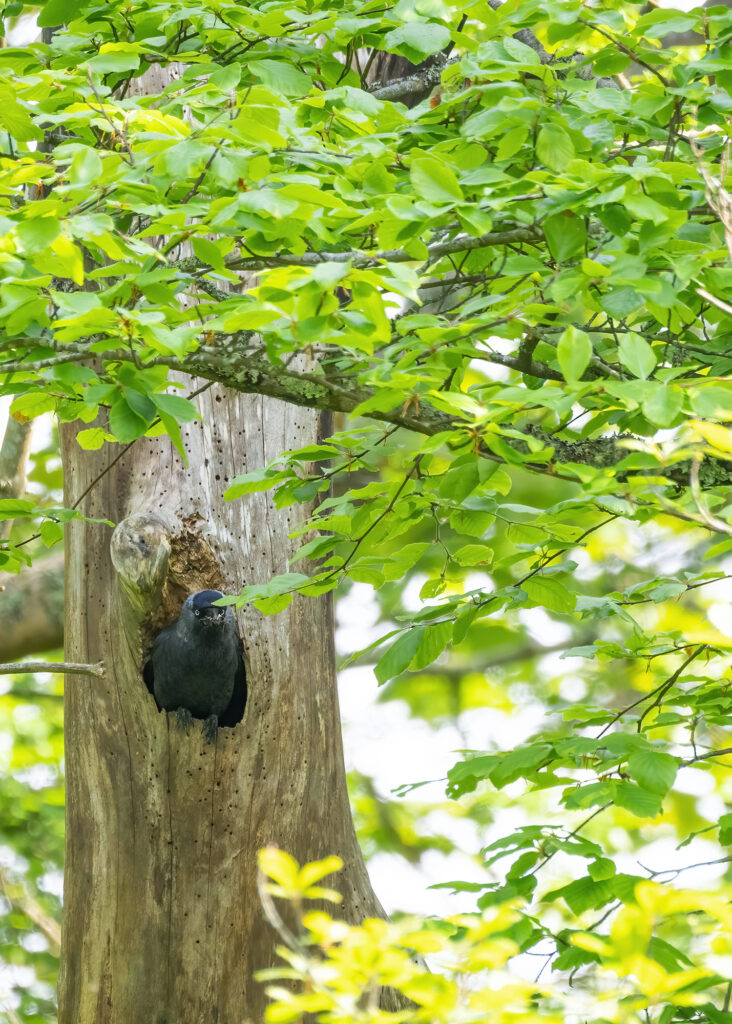
Listening out for nests – part 2
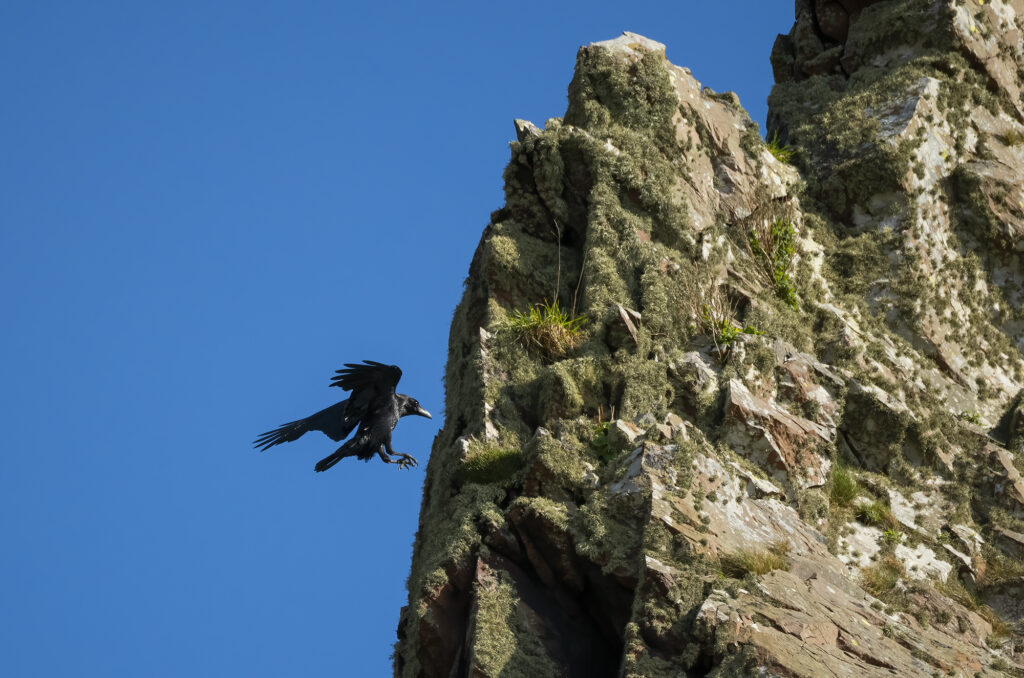
Talking of nests, in the April edition of my newsletter, I mentioned that while on a walk at Hunterston, we witnessed a pair of ravens – that we had seen and photographed previously – staking their claim on a former peregrine nest. It was exciting to watch one parent visiting the nest while the other parent patrolled the cliffs to see off the nearby buzzards, gulls and crows. Sadly, none of my images of the nest on that trip showed much apart from a raven’s backside sticking up in the air.
When we returned to the same spot three weeks later, I wasn’t sure what we’d find. Female ravens lay three to seven eggs in February or March, with most young fledging between late April and mid-May. It was eerily quiet as we walked to the place where I knew we could get the best view of the nest. I was used to the calls of the ravens echoing around the cliff face, but the skies were silent. I wondered if that meant that this attempt at breeding had failed, as there wasn’t any movement at the nest when I pointed my lens up at the cliff.
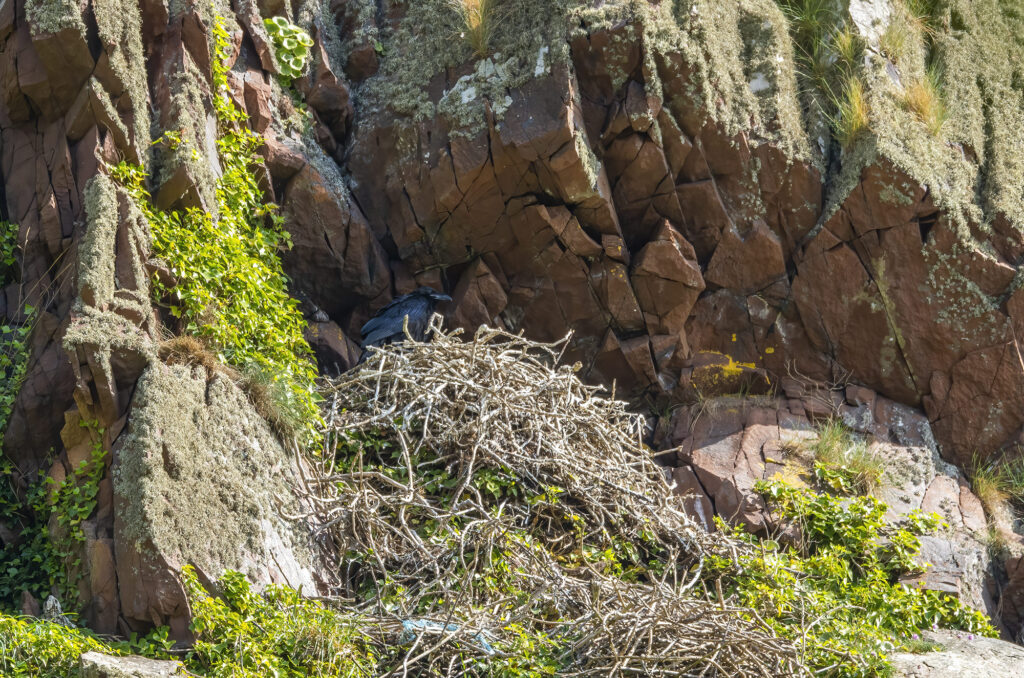
On the way back from our walk, I decided to look again, just in case. I can’t recommend the ‘just in case’ second look strongly enough when you think there has been a change in the behaviour of the wildlife you’re watching – if you don’t spot anything unusual the first time you look, you might when you look again. My instincts were correct, and I spotted the youngster shown in the (heavily cropped) image above. I can only assume the parents didn’t want to draw attention to the nest with their offspring so close to leaving it. Raven fledglings stay with their parents for several months before joining up with other young birds until they are old enough to mate and hold their own territories. By now, this raven will have taken its first flaps into a new world.
Catching the eye on the coast
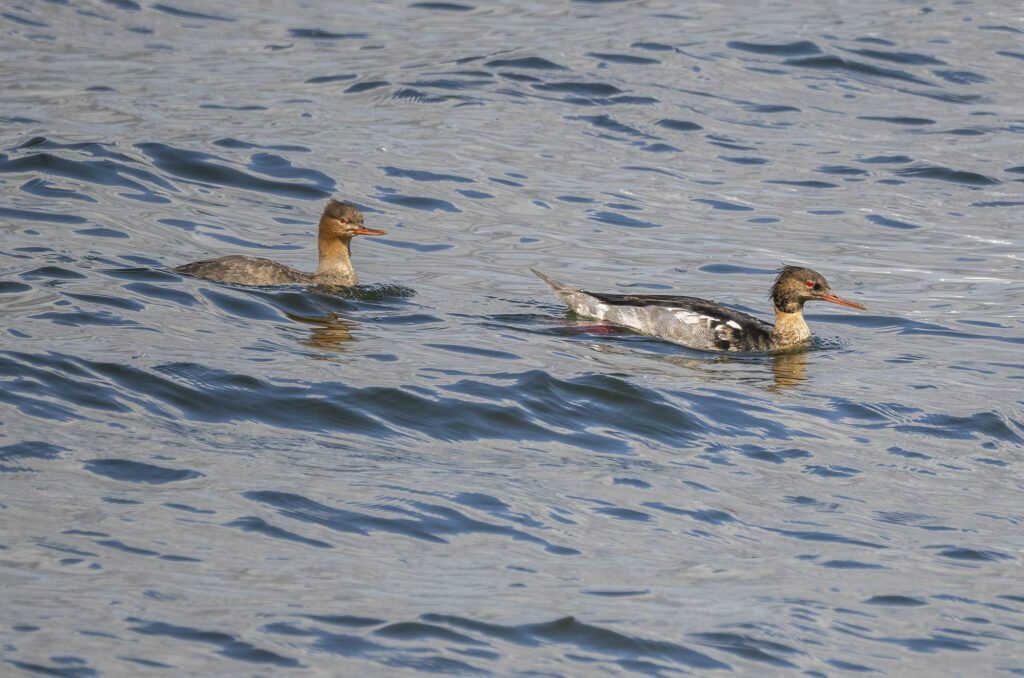
A ‘just in case’ second look at the coast recently also proved fruitful. I had been photographing a pair of red-breasted mergansers – a first for me – as they powered past Newark Castle pier on the River Clyde near Port Glasgow.
When they paddled into the distance, we continued our walk, spotting a male eider duck and a heron nearby. Farther along the path, my partner saw what he described as “a black and white bird eating a Brillo pad”. I assumed it was the male eider making a reappearance. But when I looked through my lens, it was the male red-breasted merganser. There was a moment of disappointment, as I had hoped for a closer view of the eider, but I continued to follow the red-breasted merganser with my lens anyway. I’m glad I did.
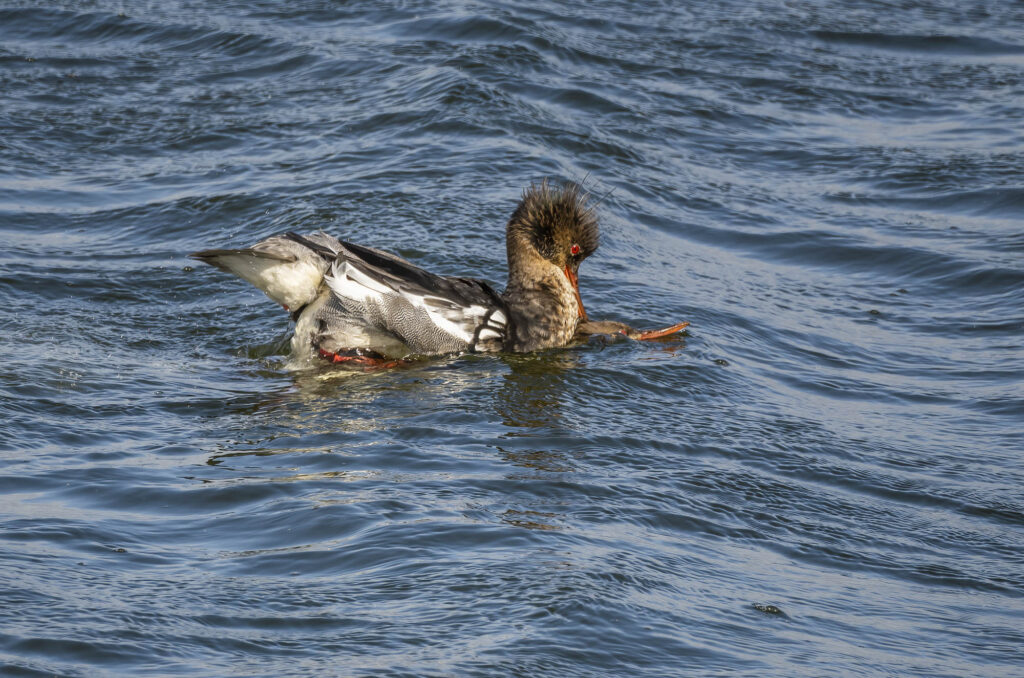
As he splashed about on the surface, I realised that what he was holding onto with his distinctive sawbill wasn’t a fish or a Brillo pad. He had hold of the neck of the female, and they were busy mating. I completely forgot about the male eider while capturing the frantic activity on the water below the coast path.
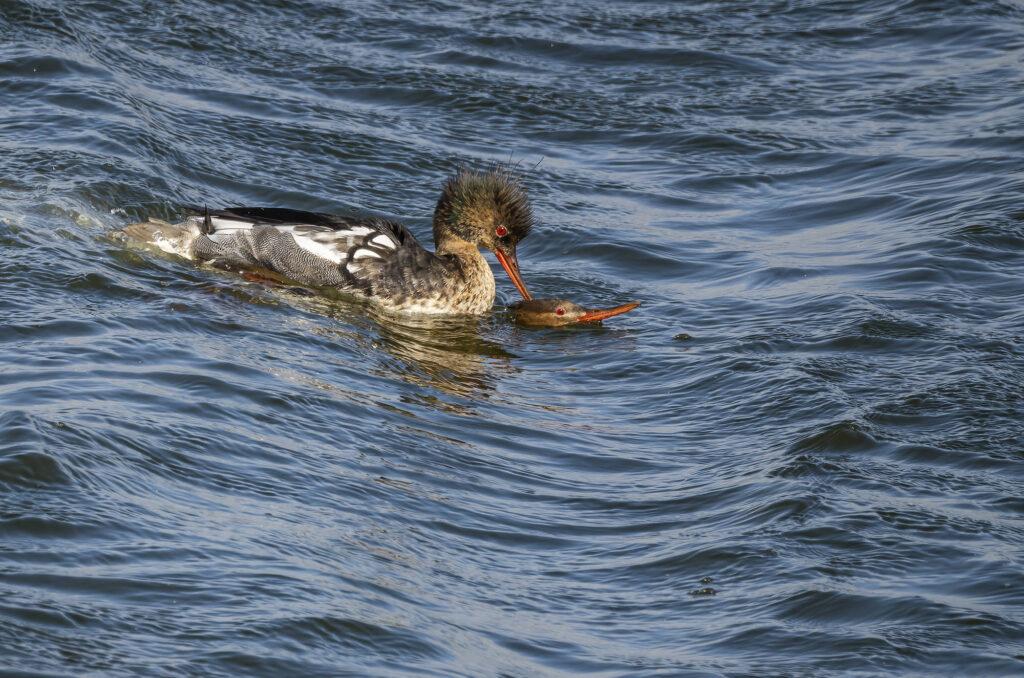
It just goes to show that keeping your lens pointed on a subject – even if you’re losing interest in the ‘usual suspect’ – can mean you witness some unusual behaviours.
So, as you take that stroll in a new spot, keep your eyes and ears open to the signs shared by the wildlife around you. You might be able to capture a moment that would be impossible on your local patch.

